Different Angle
LOVE AND FASHION IN THE GREAT WAR, A HUNDRED YEARS AGO
Life Always Finds a Way
The war, of course, is not just the front. It touches all segments of life, pervades all relations, brings its own measures. It comes up on a poster, changes fashion, pokes love. Clearly, most stories have a tragic ending, only a few raise hope, some are small and intimate, some secret and forbidden, some grew to epic proportions, so people still talk about them
By: Dragana Barjaktarević
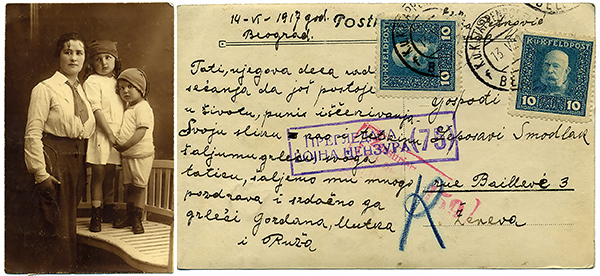 We are once again repeating what we have learned. Because World War I left one hundred years of all sorts of consequences. It struck both the small and the big. It entangled into everything life is about. Into everyday life. Led by that idea, the Museum of Ethnography curators organized an exhibition The Great War and Small Man and showed the war from the common people point of view. All that couldn’t be shown in the exhibition was told in a series of lectures – about fashion, love, propaganda…
We are once again repeating what we have learned. Because World War I left one hundred years of all sorts of consequences. It struck both the small and the big. It entangled into everything life is about. Into everyday life. Led by that idea, the Museum of Ethnography curators organized an exhibition The Great War and Small Man and showed the war from the common people point of view. All that couldn’t be shown in the exhibition was told in a series of lectures – about fashion, love, propaganda…
LONG WAR, SHORT SKIRT
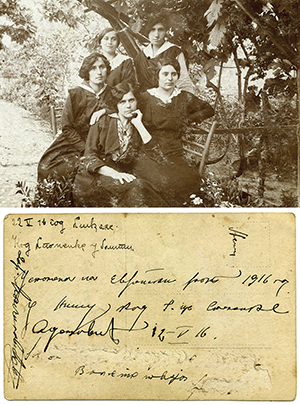 How to dress during a war? ”When they asked me if I could say something about fashion during World War I, my first thought was – everyone was naked and barefoot! Then I came to the idea to show how important the war was for changing the way of dressing”, said Bojana Popović, MA, curator of the Museum of Applied Arts, at the beginning of her lecture The Great War, Dressing, Fashion.
How to dress during a war? ”When they asked me if I could say something about fashion during World War I, my first thought was – everyone was naked and barefoot! Then I came to the idea to show how important the war was for changing the way of dressing”, said Bojana Popović, MA, curator of the Museum of Applied Arts, at the beginning of her lecture The Great War, Dressing, Fashion.
In the eve of World War I, women were not engaged in physical activities. Clothes served for emphasizing their beauty or indicating their status, so rich ladies used to change their clothes up to ten times a day. The war changed all this. While men were at the battlefields, due to lack of labor force, women from all social classes had to become more active. They started working in factories, shops, in the fields; ladies from rich houses took over and managed the businesses of their husbands. The activities imposed by the war led to changes of the dress code. Women stopped wearing anything that fettered them in their work: luxurious clothes, long underskirts, corsets… The so-called war 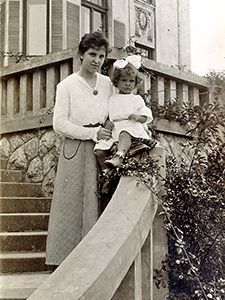 crinoline appeared. Skirts became shorter, to the ankles, and wider, because long and tight dresses were not practical for performing different activities. In accordance with the clothes, which became simpler, hairdos were simplified as well. Women most often wore buns or cut their hair short, so it wouldn’t interfere in their work, especially in case of nurses.
crinoline appeared. Skirts became shorter, to the ankles, and wider, because long and tight dresses were not practical for performing different activities. In accordance with the clothes, which became simpler, hairdos were simplified as well. Women most often wore buns or cut their hair short, so it wouldn’t interfere in their work, especially in case of nurses.
Although all this was logical, it still wasn’t entirely spontaneous. The war caused shortages of many things, but the press continued being published. Magazines introduced a new column – war and fashion. Even in the 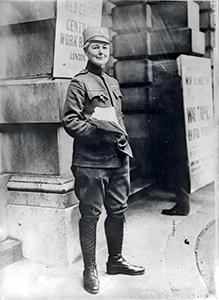 most difficult circumstances, they still paid attention to dressing. Thus a famous Viennese magazine of those times showed how chic it was to wear a uniform of a nurse or a woman employed in the army. When the British princess saw Flora Sandes wearing a male uniform, she sighed: ”I wish I could wear such clothes!” Clothes resembling uniforms became a matter of prestige in the streets of big cities and at humanitarian parties.
most difficult circumstances, they still paid attention to dressing. Thus a famous Viennese magazine of those times showed how chic it was to wear a uniform of a nurse or a woman employed in the army. When the British princess saw Flora Sandes wearing a male uniform, she sighed: ”I wish I could wear such clothes!” Clothes resembling uniforms became a matter of prestige in the streets of big cities and at humanitarian parties.
The Great War brought big changes in all segments. Fashion changed completely, brought women out of their decorative armors and placed them into comfortable and bold pieces of clothing. ”The war is long, but the skirt is short”, was the famous motto of self-confident women in 1916. Fashion changed, but, what’s more important, the consciousness and role of the XX century women slowly changed as well. The most impressive example of female independence and determination was Flora Sandes, the only female officer of the Serbian Army during World War I.
A PHOTO OF A LOVE
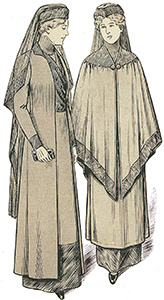 Perhaps that is why Professor Dr. Božica Mladenović decided to dedicate her lecture Love under the Shadow of the Great War to the love born in the Iron Regiment between Flora and Janaćko Jović.
Perhaps that is why Professor Dr. Božica Mladenović decided to dedicate her lecture Love under the Shadow of the Great War to the love born in the Iron Regiment between Flora and Janaćko Jović.
Janaćko Jović was one of the bravest officers of the famous Second Infantry Regiment ”Prince Mihailo”, known as the Iron Regiment. He fought in both Balkan wars and in the Great War. He was never mobilized, he always volunteered, wounded several times and twice awarded with ”Karađorđe’s Star” for his courage.
Flora Sandes was an unusual character, adventurer, she learned to ride a horse, shoot from a gun, she drove racecars. She 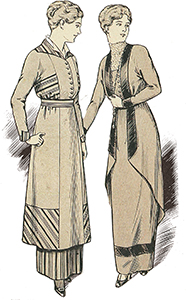 behaved like a boy, but never rejected her femininity. ”Many years later I realized that, if you were already unlucky enough to be born as a girl, the best is to use available possibilities as wise as possible, but without being a bad imitation of a man.” In the eve of the Great War, she completed a medical course and signed up to go to Serbia with the first British mission.
behaved like a boy, but never rejected her femininity. ”Many years later I realized that, if you were already unlucky enough to be born as a girl, the best is to use available possibilities as wise as possible, but without being a bad imitation of a man.” In the eve of the Great War, she completed a medical course and signed up to go to Serbia with the first British mission.
She wanted to be as close as possible to the front, so she accepted the offer to enter the infirmary of the Second Infantry Regiment ”Prince Mihailo”. That is where she met Janaćko.
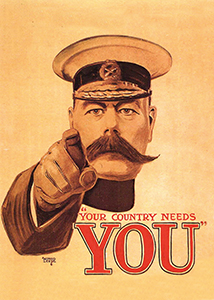 When they first met, his comment was: ”Why don’t allies send weapons and ammunition instead of women, cans and socks?” However, he was later convinced in Flora’s courage, so he accepted her as an equal member of his squad. In the horrible crossing over Albania, Janaćko fell ill. Flora took care of him and during the treatment they became closer. She wrote in her diary that they continued the retreat under one blanket. They were together until the autumn offensive in 1916, however Janaćko soon died in the battle near Bitola. Flora buried him and raised a tombstone, and took the army chest with his belongings to his parents after the war ended. The few preserved things in the chest after his death included a photo of Flora Sandes.
When they first met, his comment was: ”Why don’t allies send weapons and ammunition instead of women, cans and socks?” However, he was later convinced in Flora’s courage, so he accepted her as an equal member of his squad. In the horrible crossing over Albania, Janaćko fell ill. Flora took care of him and during the treatment they became closer. She wrote in her diary that they continued the retreat under one blanket. They were together until the autumn offensive in 1916, however Janaćko soon died in the battle near Bitola. Flora buried him and raised a tombstone, and took the army chest with his belongings to his parents after the war ended. The few preserved things in the chest after his death included a photo of Flora Sandes.
Love doesn’t end when war begins. People die, but people also live and love. ”During a war, love, like anything else, is still present in life”, explained Professor Mladenović. It is clear that most stories have a tragic ending, only a few raise hope, some are small, intimate, secret, some forbidden, while some grew to epic proportions, so people still tell about them.
***
Postcards
Postcards are an important testimony of the war, since they preserve the memory both in pictures and words. People picked their best clothes for taking photos, so the addressee would remember them in the best possible way and be proud of them when showing the picture. Be less worried. It often happened that there was a message on the back of the photo, indicating that someone is alive and well. Miloš Jurišić has a rich collection of postcards and photos from World War I. Some of them were used for illustrating this text.
***
Fabric Shortage
Up to 1914, only natural fabric was used for clothing. Only during World War I, due to shortage of textile, the production of synthetic fabrics, ones we use today, began. The shortage of fabric mostly struck ordinary people. Mothers had to find a way, so they made shoes for their children, who would quickly outgrow their small footwear, from rags and carpets. It happened that an entire family shared one pair of shoes, depending on who is going out. Summer was a relief, because they could walk barefoot.
***
Posters
Besides the press, propaganda in World War I was based on posters. The sides in conflict tried to persuade masses with propaganda posters. Graphic design and messages were similar everywhere. ”Your country needs you!” – General Kitchener calls for mobilization with his finger pointing at the observer. Americans used the same motif later, only with Uncle Sam calling: ”I want you for US Army!” This is perhaps the most famous poster from World War I. Besides calling to war, posters had other messages as well: ”Don’t drink alcohol, except on Mondays”, ”Don’t drive cars”, ”Don’t dress extravagantly, it’s not patriotic”…
